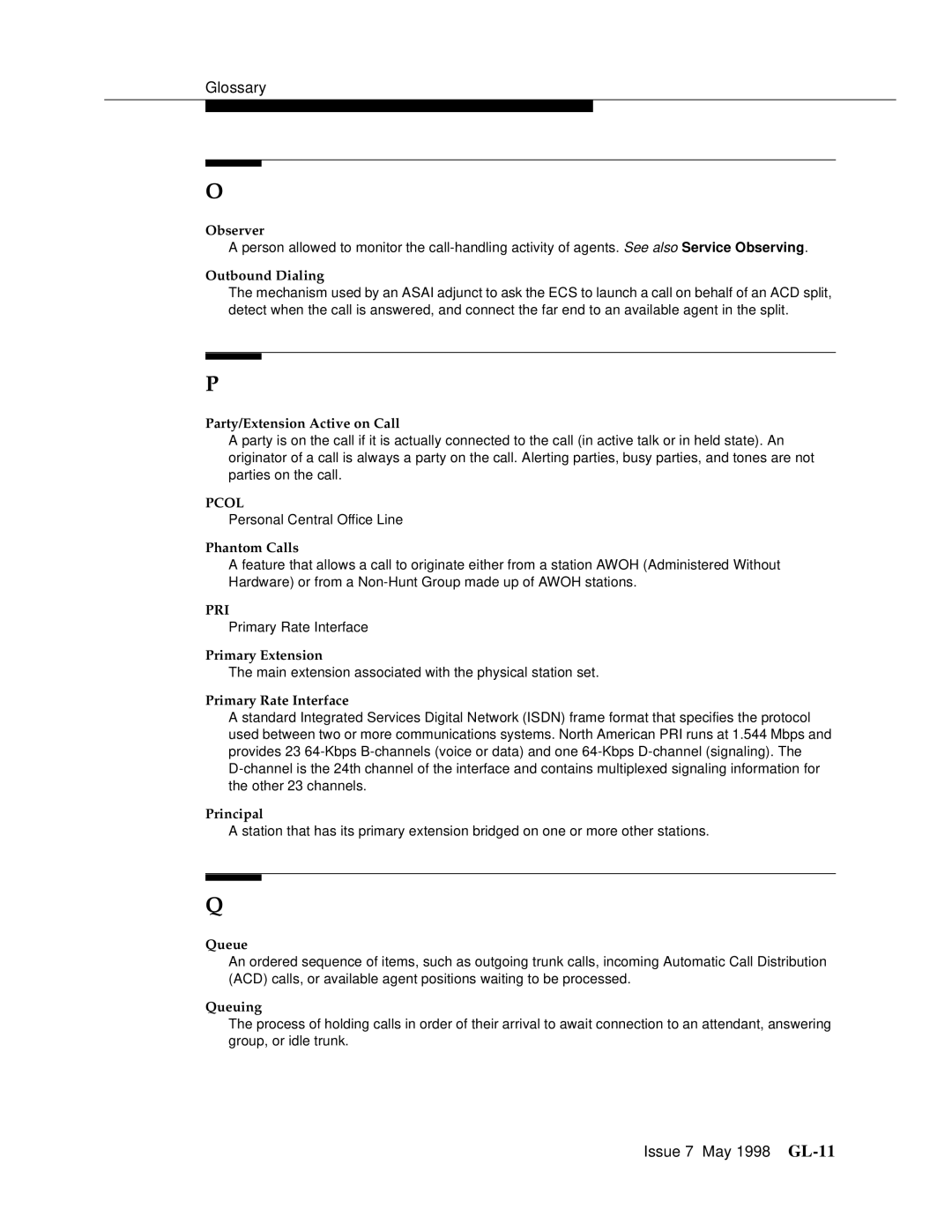
Glossary
O
Observer
A person allowed to monitor the
Outbound Dialing
The mechanism used by an ASAI adjunct to ask the ECS to launch a call on behalf of an ACD split, detect when the call is answered, and connect the far end to an available agent in the split.
P
Party/Extension Active on Call
A party is on the call if it is actually connected to the call (in active talk or in held state). An originator of a call is always a party on the call. Alerting parties, busy parties, and tones are not parties on the call.
PCOL
Personal Central Office Line
Phantom Calls
A feature that allows a call to originate either from a station AWOH (Administered Without Hardware) or from a
PRI
Primary Rate Interface
Primary Extension
The main extension associated with the physical station set.
Primary Rate Interface
A standard Integrated Services Digital Network (ISDN) frame format that specifies the protocol used between two or more communications systems. North American PRI runs at 1.544 Mbps and provides 23
Principal
A station that has its primary extension bridged on one or more other stations.
Q
Queue
An ordered sequence of items, such as outgoing trunk calls, incoming Automatic Call Distribution (ACD) calls, or available agent positions waiting to be processed.
Queuing
The process of holding calls in order of their arrival to await connection to an attendant, answering group, or idle trunk.
